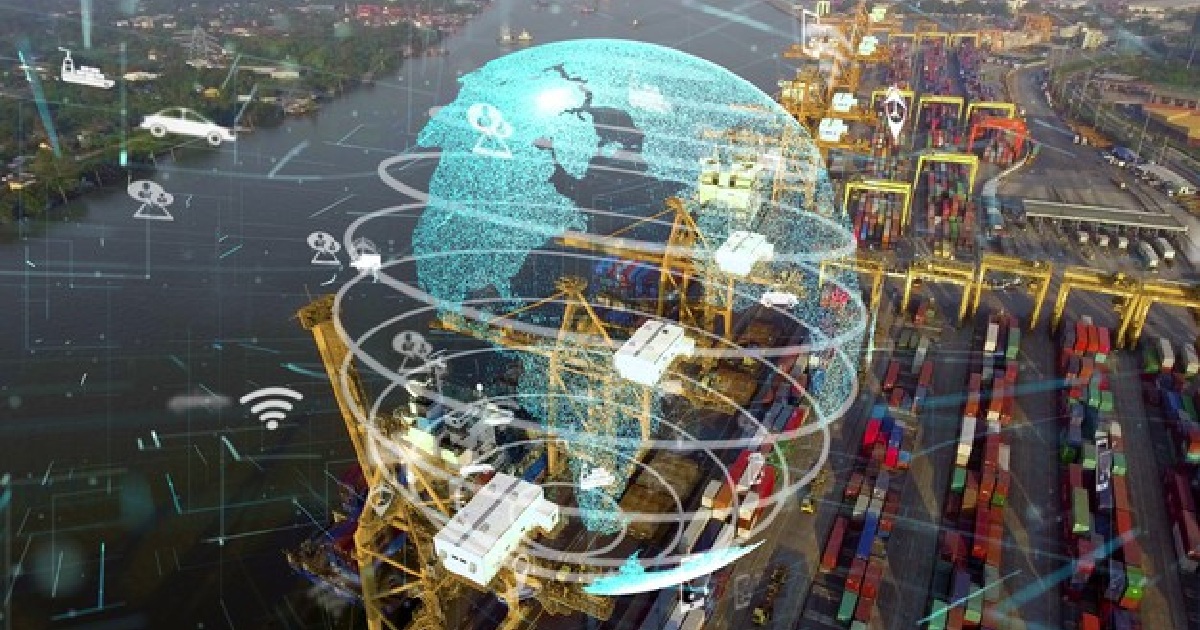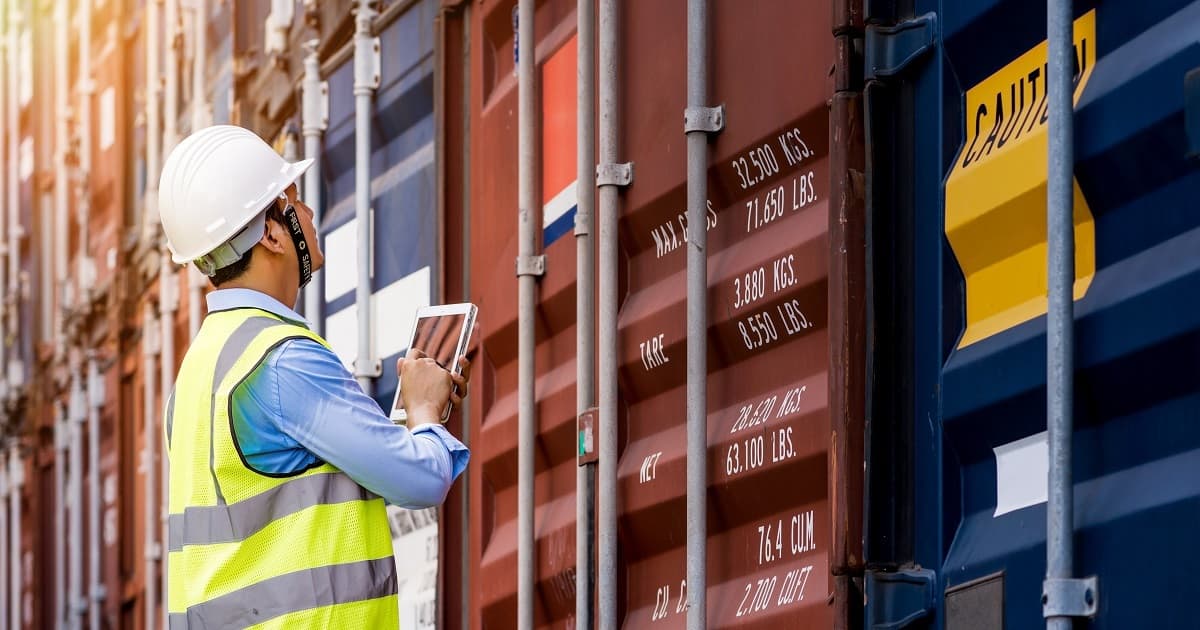
Warehousing and Distribution
Article | June 27, 2023
Supply chain is the backbone of any business. Since there is a supply chain in existence, you can buy whatever product you want. The supply chain is evolving since the Industrial Revolution, and it is still changing, and the evolution journey is fascinating. Before moving forward with the article, first, let's understand supply chain and supply chain management.
What is a Supply Chain?
A supply chain is an entire process of producing and selling commercial goods, beginning with the procurement of raw materials and ending with the distribution and sale of the goods. The supply chain ensures that a product is available in the right place, at the right time, and the lowest possible cost while ensuring the product quality. The supply chain aims to provide the maximum value to the customer at the minimum likely costs. The supply chain is the single most significant expense for businesses, and it provides them with a tremendous opportunity to improve and increase savings and profit margins. The price of most products is competitive in the market, but the supply chain determines the product's profit margin. The demand for products and services fluctuates for various reasons, and meeting this fluctuating demand with a higher degree of quality requires knowledge of supply chain management. Effective supply chain management is essential for any business to compete in the market.
What is Supply Chain Management?
Supply chain management is an essential factor in a business's long-term success. The management of how goods and services evolve from raw materials to products sold to consumers is known as supply chain management. It includes the processes of transporting and storing raw materials, storing finished goods until they sell, and tracking where sold goods go so that you can use the data to boost future sales. Supply Chain Management includes all aspects of business activities, including logistics, purchasing, and information technology. Materials, finances, suppliers, manufacturing plants, wholesalers, retailers, and consumers are all combined into a single system. A business with a well-managed supply chain can significantly reduce all operating costs associated with that chain, resulting in higher profits. The main goal of effective supply chain management is to increase profitability by improving customer satisfaction and reducing business costs. Profits improve as expenses are in control and reduced when possible. When the costs of purchasing raw materials and manufacturing goods drop, the operating costs also decrease.
Challenges in Supply Chain Management
There are many challenges related to supply chain management. In this section, we will focus on some of the most significant supply chain management challenges.
• Visibility: It is a significant issue in supply chain management. Businesses are unable to track all international cargo. The majority of data on the ocean or air shipments is often unavailable. Between 2008 and 2016, an average of 600 containers lost at sea (it does not include catastrophic incidents). These figures are concerning because the amount of cargo shipped over time is rapidly rising.
• Uncertainty: Uncertainty has been difficult in supply chain management. Demand planning is essential because many businesses have massive amounts of leftovers. If it is perishable, it is thrown away. There is a lot of waste, and it's all because of bad planning. In addition, initial raw materials may be unreliable, or lead time may be unpredictable. It isn't easy to be confident of any part of the supply chain, mainly because it is an extensive system.
• Customer Service: Supply chain management is all about getting the right product to the correct location at the right time. It seems easy at first, but it can quickly become complicated.
• Cost Management: Increasing energy/fuel and freight costs, a more significant number of global customers, technology, rising labor wages, new regulations, and rising commodity prices all strain operating costs.
• Planning and Risk Management: Annual reviews and redesigns are needed to be efficient and effective. These changes are in reaction to market changes, such as new product releases, global sourcing, credit availability, and the need to protect intellectual property. To monitor and minimize these threats, they must be identified and quantified.
• Supplier/Partner Relationship Management: It is crucial to create, understand, and follow mutually agreed standards to understand current performance and areas for improvement better. Using two separate approaches to measure and communicate performance results is a waste of time and resources. Trusting the system that was in place to ensure consistency and better supplier/partner relationships is necessary.
Emerging Trends in Supply Chain
The supply chain process is continuously evolving. The emerging supply chain and logistics trends prioritize intelligent, tech-driven management to minimize operational costs and enhance efficiency. The logistics and supply chain aspect is vital for any business in supplying high-quality raw materials, ensuring an efficient manufacturing process, and tracking, shipping, and storing finished goods.
Companies that implement well-designed supply chain practices can satisfy customer needs more quickly and efficiently. This improves customer relationships and loyalty, resulting in increased revenue and the acquisition of new customers through positive word of mouth.
Let's look at some significant emerging trends that are expected to shape and develop supply chain operations in the future.
Digitization of Supply Chains
Digitization is the process of reinventing logistics operations by combining the latest technology with other physical and digital assets. Digitization allows us to better adapt to the fast-paced, highly competitive, omnichannel business environment.
Digitization increases the speed, dynamics, and resiliency of supply chain operations, resulting in improved customer responsiveness and, ultimately, increased revenue. Companies that embrace digitalization can gain genuine value, improved revenue, and market valuation.
Companies should significantly redesign their supply chain strategy to gain the full benefits of digitization. It is not enough to decorate it with digital technology.
The Internet of Things (IoT) occupies a significant position in digitalization as a highly transformational technology solution in the logistics sphere. The Internet of Things (IoT) is a network of interconnected computing devices that allows data to be sent over networks without human input. It assists businesses in monitoring inventory, managing warehouse stock, optimizing fleet routes, and reducing dead miles.
Artificial Intelligence
Advanced Artificial Intelligence solutions have several uses in the supply chain, particularly in the warehousing area. The procurement process involves using gesture recognition solutions instead of keyboard and mouse. It also includes self-driving vehicles, which are designed to navigate without human assistance.
In the supply chain, the concept of robotics and automation is widely implemented. The new generation of robots is easier to program, more flexible, and more affordable. Their job is to help employees with repetitive and physically challenging tasks.
Enhanced Supply Chain Visibility
Proper supply chain data analysis can significantly boost business forecasting and decision-making. It can also optimize the use of inventory management, storage, and transportation resources.
Supply chain visibility provides information on what is happening at each stage of the supply chain. It is crucial for the overall efficiency of the supply chain process, which includes sourcing, manufacturing, transportation, and delivery.
Real-time inventory management is one of the advantages of enhanced chain visibility. It uses mobile point-of-sale systems and sensors, and it elevates inventory management to a whole new level.
For example, instead of paying for purchased goods at a store, customers can take the desired products and have the products immediately charged to their credit and debit cards. Furthermore, real-time inventory management allows for the replacement of goods as they are consumed.
Circular Supply Chain
The term "linear supply chain" refers to the traditional concept where goods travel in a straight line (from raw material to finished product). Modern logistics techniques are focused on the circular supply chain idea, which involves reusing previously, used products as raw materials.
Reusing products and materials is referred to as reverse logistics, and it is a novel and innovative technique. It assists businesses in reducing administrative and transportation expenses, increasing sustainability, improving customer service and loyalty, creating value, and conserving resources.
Used products can be kept in circulation if businesses work together with their suppliers and customers.
More focus on Risk Management and Supply Chain Resiliency
Without a doubt, companies must seriously consider supply chain risk management as a means to prepare for unfavorable circumstances. The increasing use of outsourcing, offshoring, product versatility, supply chain security, and significant interdependence across the supply chain highlights the need to deal with risks in the supply chain.
However, no matter how solid the plan is, it cannot prevent errors from happening. Here's where supply chain resilience comes into play. It is an accurate indicator of a company's ability to survive disruptive circumstances.
Visibility throughout the supply chain is necessary to detect disruptions, close collaboration with suppliers and distributors so that alternative supply routes can be found, and a good incident response plan to provide a course of action when disruption occurs are all steps that are important to make the supply chain more flexible and resilient.
Use of SaaS in the Supply Chain
The software-as-a-service (SaaS) Sapproach is growing in popularity in supply chain technology and logistics management and the growth of cloud computing. This is primarily due to SaaS's security and safety and the convenience of paying for precisely the services you require. Companies can avoid the high fixed costs of system maintenance, upgrades, and infrastructure-related expenditures by using SaaS.
Supply chains are continuously evolving technology, and the diversity of employee skill sets is playing an essential role in this evolution. Organizations are becoming more conscious of changes in their market competition and continuously updating or even reinventing their market offering to maintain and develop their market positioning.
Many companies are already turning to technology to improve their supply chain operations; however, before new systems are implemented and employees are upskilled to adapt to new ways of working, existing processes must be reviewed to eliminate waste activities from the supply chain, and data must be cleansed. To meet consumer demands, supply chains must be constantly checked for efficiency improvements and aligned with corporate strategy. At present, many organizations are reviewing the length of their supply chains, intending to minimize the overall size and bring supply chains closer to the organization or the end consumer, reduce risk exposure, eliminate waste, and align with corporate strategy.
FAQ’s
• What are the three foundations of supply chain?
The three foundations of a supply chain are strategy, service, and cost. Aligning the strategy, service and cost is essential to support your company’s overall business growth and objectives. A good strategy along with good service and reduced costs helps in increasing profitability and customer satisfaction.
• What are the pillars of supply chain?
Plan, Source, Make, Deliver and Return are the pillars of supply chain.
Planning involves strategies and methods to be planned, Sourcing means procuring raw materials and other services, Making means manufacturing, Deliver means ensuring that the products reach the customers on time and Return means post delivery customer support that is associated with all kinds of returned products.
• Why supply chain management is important?
The management of how goods and services evolve from raw materials to products sold to consumers is known as supply chain management. It includes the processes of transporting and storing raw materials, storing finished goods until they sell, and tracking where sold goods go so that you can use the data to boost future sales. A business with a well-managed supply chain can significantly reduce all operating costs associated with that chain, resulting in higher profits. The main goal of effective supply chain management is to increase profitability by improving customer satisfaction and reducing business costs.
{
"@context": "https://schema.org",
"@type": "FAQPage",
"mainEntity": [{
"@type": "Question",
"name": "What are the three foundations of supply chain?",
"acceptedAnswer": {
"@type": "Answer",
"text": "The three foundations of a supply chain are strategy, service, and cost. Aligning the strategy, service and cost is essential to support your company’s overall business growth and objectives. A good strategy along with good service and reduced costs helps in increasing profitability and customer satisfaction."
}
},{
"@type": "Question",
"name": "What are the pillars of supply chain?",
"acceptedAnswer": {
"@type": "Answer",
"text": "Plan, Source, Make, Deliver and Return are the pillars of supply chain.
Planning involves strategies and methods to be planned, Sourcing means procuring raw materials and other services, Making means manufacturing, Deliver means ensuring that the products reach the customers on time and Return means post delivery customer support that is associated with all kinds of returned products."
}
},{
"@type": "Question",
"name": "Why supply chain management is important?",
"acceptedAnswer": {
"@type": "Answer",
"text": "The management of how goods and services evolve from raw materials to products sold to consumers is known as supply chain management. It includes the processes of transporting and storing raw materials, storing finished goods until they sell, and tracking where sold goods go so that you can use the data to boost future sales. A business with a well-managed supply chain can significantly reduce all operating costs associated with that chain, resulting in higher profits. The main goal of effective supply chain management is to increase profitability by improving customer satisfaction and reducing business costs."
}
}]
}
Read More

Warehousing and Distribution
Article | July 11, 2023
The complexity of today’s supply chain has resulted in a highly fragmented supply chain ecosystem. Whether it is a global pandemic or an ongoing war, streamlining the moving parts in the supply chain management system is an immense feat in the current climate. The resulting shortage of materials, disruption of transportation, and delays have complicated the supply chain even further. Add to it the expectation to minimize expenses, optimize inventory, and enable quality and customer expectations, and stakeholders at every level of the supply chain are inundated with challenges.
This is where using advanced analytics in supply chain can be a game changer for many manufacturers. It can help them gain a deeper insight into their operations and how the supply chain is moving.
How Supply Chain Analytics Enriches Supply Chain Management
A 360-degree view of the supply chain is crucial for supply chain leaders. A lack of insight can cause costly delays and avoidable disruptions. Obtaining complete visibility in supply chain management, on the other hand, can be difficult. The immense volume of data that many organizations have to deal with makes it difficult to gain proper insight.
Supply chain analytics tools help in gaining a better sense of the aggregated data from different parts of the supply chain, such as procurement, ERP in supply chain management, warehousing management, shipping and logistics management, and many more. The more accurate the data is, the simpler it is to use advanced supply chain management analytics to forecast, predict, and plan better in order to maximize the supply chain’s capabilities.
Optimizing the Supply Chain: 3 Ways to Do so with Analytics
With the range of analytics applications in supply chain in use today, manufacturers have the opportunity to completely transform how to view, manage and strategize. Here are five data analytics supply chain tools to consider in the pursuit of optimization.
Demand Forecasting
Inventory management is at the heart of supply chain optimization. Not calibrating the inventory stock based on demand and supply for bestselling products and those that don’t move fast can cause either an overstocking or understocking problem. Either way, forecasting the right balance is difficult to achieve, but data analytics can make it simpler. The lack of the right products in stock can heavily impact the bottom line. According to a survey by Logility, 36% of supply chain experts consider inventory optimization the primary reason for adopting analytics. An integrated mapping of retail sales, inventory levels, and the flow of goods will lead to accurate demand forecasting.
This data can empower organizations to:
Strategize sales promotions
Define product pricing
Maximize budgets
Predict accurate inventory levels
Inventory management has a cascading effect on the supply chain, and advanced demand forecasting has helped many organizations achieve an optimum level of inventory for the right products.
Predictive Warehousing Maintenance
Machine Learning (ML), artificial intelligence (AI), and the Internet of Things (IoT) have been emerging technologies on the supply chain management landscape. By using a mix of these technologies, it is possible for manufacturers to deploy predictive maintenance in warehousing. Predictive maintenance is the process of assessing data generated from the past and in real-time to determine patterns and identify equipment failure and maintenance schedule before a breakdown occurs.
This helps manufacturers to:
Avoid heavy repair costs
Plan spare part supply
Slash downtime from equipment failure
Eliminate production delays
In addition to reducing production bottlenecks, predictive maintenance gives businesses the ability to manage their equipment and optimize their shelf-life.
Warehousing Efficiency
At the warehouse phase of the supply chain, analytics can help manage the supply chain in more than just one way. The warehouse workflow is just as crucial, as it facilitates a clear view of the condition of goods as well as the optimization of the warehouse space. In addition to warehouse space maximization, quality control is another challenge that warehousing management addresses.
Supply chain analytics can enhance warehousing efficiency by:
Ensuring the correct storage of goods based on their weight, fragility, and perishability
Aligning with resource management like equipment, vehicles
Identifying disruptions to storage before they occur
One of the advantages of supply chain analytics is getting a deep insight into the warehouse’s operation so manufacturers can identify gaps and take steps to make it more efficient.
Transportation Tracking
Real-time analytics of transportation and logistics is a crucial piece in the puzzle of supply chain management. For example, the data generated in relation to fuel consumption, weather conditions, and even traffic patterns can help organizations boost their logistics and carrier management.
It can help them to:
Schedule deliveries
Determine better routes
Evaluate current routes
Strategize their shipping schedule
To Wrap it Up
To put it simply, a deep insight into the supply chain, inventory management, and warehouse operations is a great way to ensure the supply chain is on track. Effective supply chain management software is an asset for an organization when it is able to leverage the insights and make well-informed strategies to further optimize the supply chain.
Read More

Warehousing and Distribution
Article | July 11, 2023
With half a million people benefited in 60+ countries, the Tomorrow Rising Fund is now focusing on education and professional training programs to secure the best future for young people and their communities affected by COVID-19.
Two months after launching the Tomorrow Rising fund to support Covid-19 emergency relief in April 2020, Schneider Electric’s Foundation moves forward to support recovery and resiliency through education and training programs.
The Tomorrow Rising Fund was launched to support emergency and longer-term reconstruction related to Covid-19 in all the countries where Schneider Electric operates. The Schneider Electric Foundation appealed to its leaders and employees to get involved and all their donations have been matched by the Group. Other external stakeholders and partners have also contributed.
Read More

Freight
Article | March 21, 2022
Even though there are distinct differences between demurrage, detention and port charges, many are still oblivious to these differences and there have been several questions on this blog relating to these charges.
This article is about how demurrage, detention, and port charges work.
International Trade and CostsWhen it comes to international trade, majority of the buyers and sellers use Incoterms to decide what each other’s responsibilities and liabilities are in terms of the business, especially related to costs.
Generally, there is very little room to manoeuvre in terms of additional and unbudgeted costs incurred on the shipment and therefore in their own interest it is important that the buyers and sellers take necessary precautions to ensure that all known costs relating to the business are discussed and finalised before the shipment commences.
There are many entities involved in the process of shipping a container from Point A to Point B, each with their own cost component, all of which have to be covered either by the seller or the buyer.
Demurrage, detention and port charges are just some of these costs that may be applicable in a shipment.
While some of the port charges are valid and unavoidable, demurrage, detention and some of the port charges (like port storage, early arrival, late arrival, amendment, shifting etc) are entirely avoidable if everyone in the chain follows the process that they need to follow.
What are port charges?
Port charges, as the name suggests are a set of charges levied by the port or terminal which the container passes through.In terms of container shipments, port charges may include but not limited to below :
Terminal Handling Charge (THC)
Is quite simply the charge levied by the port for the loading and discharging of a container from the ship.. THC differs from port to port, terminal to terminal around the world and is charged both by the load port and discharge port.If the cargo is transhipped anywhere along the route, then the transhipment port also charges this THC but that is paid by the shipping line directly to the port and this quantum is usually included in the ocean freight charged by the line.
Early Arrival Charge
A charge levied by some of the ports/terminals for a container that arrives in the terminal BEFORE the stacks into which it is to be taken has been opened.. Early arrival can happen due to various reasons like a container missed the stacks for the previous vessel narrowly, but since the container is packed, it needs to be taken to the port, The acceptance of containers prior to the stacks/gate open is at the discretion of the Port/Terminal Operator and on the circumstances surrounding the operation of the vessels.
Late Arrival Charge
A late arrival charge is a charge levied by the port for a container that arrives in the terminal AFTER the stacks into which it is to be taken has been closed.. This could be due to delays in documentation, packing delays, inspection, trucking delays and many other situations.The acceptance of containers after the closing of stacks/gate is at the discretion of the Port/Terminal Operator and on the circumstances surrounding the operation of the vessels and if the containers can be accepted without disrupting the schedule of the vessel and ports.
Stuffing/Destuffing of Containers
Some ports/terminals allow the stuffing (packing)/de-stuffing (unpacking) of the containers within the port area and charge customers based on the port tariff.This activity may happen at ports that provide CFS services and allow containers to be packed or unpacked in the port or due to some mistakes when the cargo was originally packed – say incompatible hazardous cargoes packed together.Depending on the port/terminal/country, the port charges may be charged directly to the customer (importer or exporter) or to the shipping line, who in turn will charge this to the customer.
Of course, this is not the full list of port charges but these charges have been mentioned as it relates to the subject under discussion,Demurrage and DetentionWhile some of these port charges may be unavoidable, demurrage and detention charges on the other hand are avoidable charges, but in a lot of cases due to mishandling, miscommunication, misunderstandings and not following the proper protocols, these charges occur..When they do occur, these charges may create quite a financial impact on the whole business and sometimes these costs could be so prohibitive that some customers abandon their cargoes at the destination due to these costs.
Although the most common market practice is to combine demurrage and detention, there are several cases where these are charged separately, and therefore it is important to know the difference between demurrage and detention.
Read More